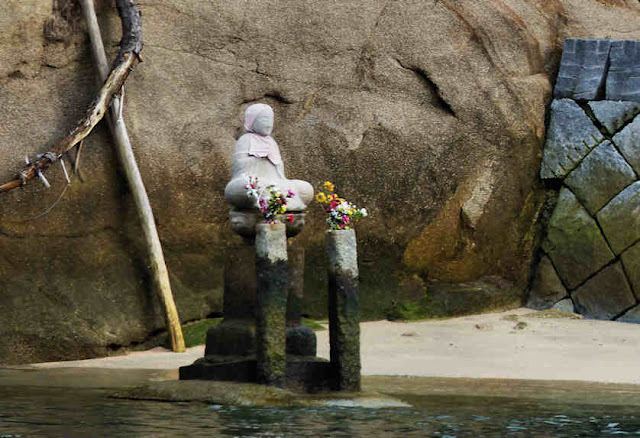Senshukaku is one of the names of the former Omote Goten of Tokushima Castle.
It's not a particularly big garden, but it splits nicely into two halves: a karesansui garden and a pond garden.
This first post is just on the karesansui part. I will cover the pond garden next.
Stones and rocks are the neart of a Japanese garden. This is my opinion after viewing hindreds of gardens. The rocks are chosen and set first and the rest of the garden grows from that.
This is certainly obvious here in the gardens at the former Tokushima Castle.
One particular type of stone predominates, known as Awa Bluestone. Not a geologist but I believe it is a type of rock called greenschist in English.
Awa bluestone was used a lot by the greatest 20th-century Japanese gardener, Mirei Shigemori.
The garden was designed by Ueda Soko ( 1563-1650) a warlord as well as a garden designer, and was built around 1600.
He was also a tea master and founded his own school of tea ceremony.
Perhaps the most famous site in the garden is the stone bridge made of a single ten meter long piece of bluestone.
Seen in photos 2, 4, 5, 6, 7, 9, 10, 15, and 20.
The long piece of rock is actually split, according to legend, by Hachisuka Yoshishige, the first lord of the castle, and the person for whom the garden was built.
It is said he stamped upon it and it cracked.
The gardens are a designated National Scenic Spot.
If you would like to subscribe by email just leave your email address in the comments below. It will not be published and made public. I post new content almost everyday, and send out an email about twice a month with short descriptions and links to the last ten posts.






































































